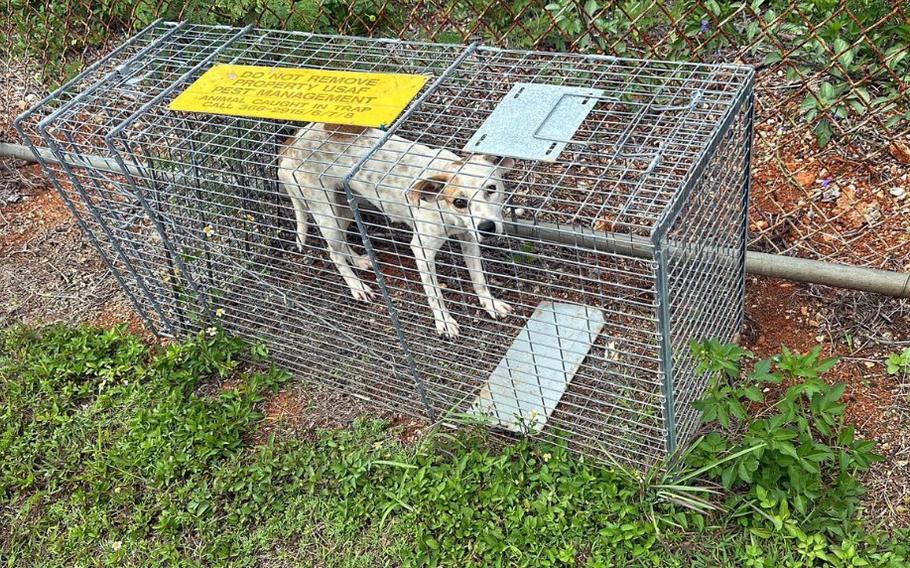
This image from the 36th Wing Commander’s Facebook page shows a "boonie dog" captured in June 2024 on Andersen Air Force Base, Guam. (U.S. Air Force)
The Guam government has launched its first coordinated effort to address the island’s large population of free-roaming dogs.
The U.S. territory’s overpopulation of strays — often called “boonie dogs” — dates to World War II, when military working dogs bred with the native population. Many of their descendants now roam the island’s jungles and often appear on U.S. bases.
The Dog Population Management Task Force, created Sept. 30, brings together government agencies, nonprofits and community partners to find humane solutions to an issue that has persisted for decades, according to a Department of Agriculture news release March 24.
“While the problem isn’t new, what is new is the unified, data-driven approach we’re now taking through the Dog Population Management Task Force,” territorial veterinarian Dr. Mariana Turner said in an email Thursday to Stars and Stripes.
A 2014 survey by Humane Society International estimated approximately 60,000 dogs live in Guam’s 212 square miles — including 24,500 strays — Guam Animals in Need executive director Alison Hadley told Stars and Stripes in December. That’s about the same area as Chicago.
In February, the task force conducted the island’s first follow-up survey since 2014. It collected data on stray and free-roaming dog and cat populations, pet ownership, vaccination practices and sterilization rates, according to the release. Results are expected by mid-April.
The task force is drafting legislation to establish a trap-neuter-return program. The practice aims to curb reproduction without euthanizing animals by trapping strays, sterilizing them and returning them to their original locations.
The task force is also supporting training for animal control officers in “the skills necessary for humane enforcement of animal welfare laws,” according to the release.
Stray animals pose a wide range of dangers to the island’s residents, Turner said.
“These include dog bites and attacks on people and pets, traffic accidents caused by dogs in the road, the spread of diseases and parasites, livestock losses and damage to property, and inhumane conditions for the dogs themselves, many of whom suffer from starvation, injury or disease,” she said.
High numbers of unsterilized dogs and cultural norms that allow them to roam freely have worsened the problem, the Pacific Daily News reported March 18.
Guam has attempted various solutions over the years — spay and neuter clinics, bounty programs and stray dog roundups by the Mayor’s Council — but none have led to lasting results.
“In reality, most of these initiatives were fragmented, under-resourced, and lacked the subject matter expertise necessary to have a successful program,” Turner said. “The DPM Task Force is the first coordinated, territory-wide effort bringing together government, nonprofit, and community partners under a shared strategy.”
Groups collaborating with the task force include Guam Animals in Need, which operates the island’s animal shelter; Neuter Island Pets; and off-island groups like the Animal Legal Defense Fund.
“This is just the beginning,” Turner said. “The Dog Population Management Task Force represents a shift in how Guam addresses this long-standing issue, from reactive to proactive, and from isolated efforts to unified action. Together, we can build a safer and more compassionate island for people and animals alike.”